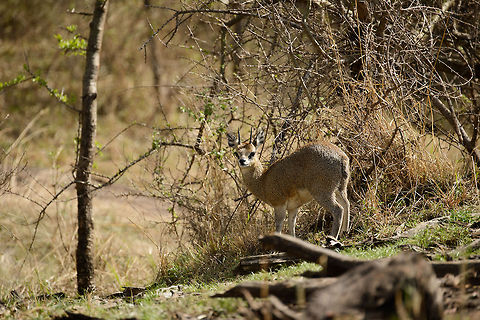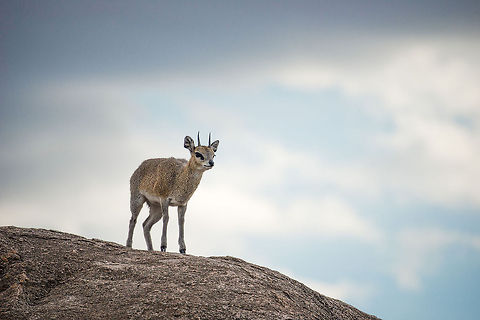
Appearance
Reaching approximately 58 cm at the shoulder, klipspringers are relatively small animals compared to some of their larger antelope cousins. They stand on the tips of their hooves and can fit all four hooves on a piece of cliff the size of a Canadian dollar coin. Male klipspringers have horns that are usually about 10–15 cm long. Female klipspringers in Eastern African populations also have horns.With a thick and dense speckled "salt and pepper" patterned coat of an almost olive shade, klipspringers blend in well with the ''koppie'' on which they can usually be found.
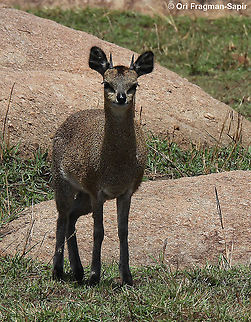
Naming
The word ''klipspringer'' literally means "rock jumper" in Afrikaans/Dutch. The klipspringer is also known colloquially as a ''mvundla'' .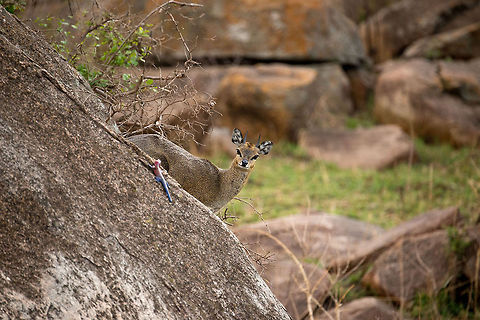
Distribution
The klipspringer lives from the Cape of Good Hope, where it is found in mountain fynbos, through the rest of Southern Africa, where it is found in rocky koppies in woodland and savanna, all the way up East Africa and into the highly mountainous highlands of Ethiopia.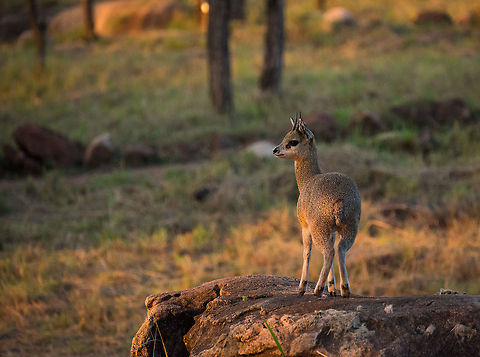
Behavior
Klipspringers do not live in herds but rather in breeding pairs. Klipspringers mate for life and a mated pair will spend most of their lives in close proximity to one another. When one klipspringer is eating the other will assume lookout duty, helping to keep the pair aware of any predators.The mating season for klipspringers is from September through January. The gestation period is about 214 days.
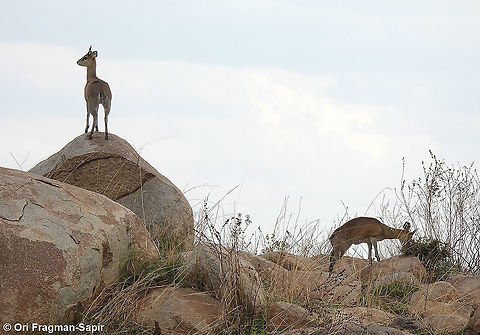
Habitat
The klipspringer lives from the Cape of Good Hope, where it is found in mountain fynbos, through the rest of Southern Africa, where it is found in rocky koppies in woodland and savanna, all the way up East Africa and into the highly mountainous highlands of Ethiopia.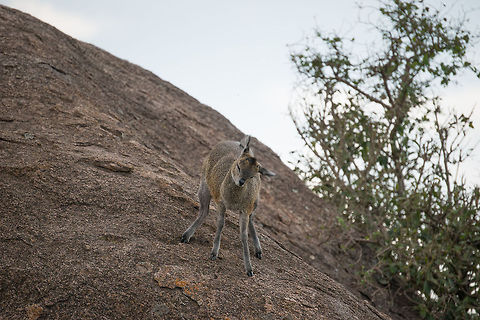
Food
Klipspringers are herbivores, eating plants that grow in mountainous habitats and rocky terrain. They never need to drink, since the succulents they subsist on provide them with enough water to survive.References:
Some text fragments are auto parsed from Wikipedia.
